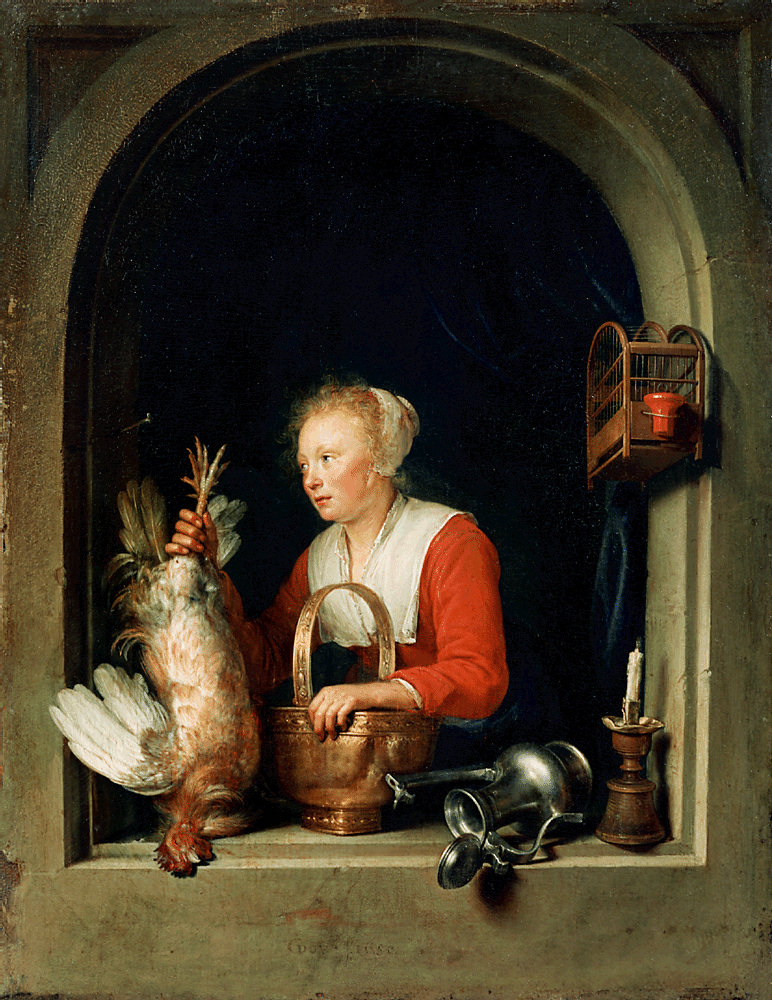
I’m a lousy housewife, which, in my initial phase of housewifery, is exactly what I aspired to be. Not for me the bourgeois passion for clean baseboards and orderly closets, especially after graduate school in literature in the mid-1980s, in the wake of second-wave feminism. Not for me the fate of the American suburban woman as Betty Friedan described it:
freed by science and labor-saving appliances from the drudgery, the dangers of childbirth and the illnesses of her grandmother. She was healthy, beautiful, educated, concerned only about her husband, her children, her home. She had found true feminine fulfillment. As a housewife and mother, she was respected as a full and equal partner to man in his world. She was free to choose automobiles, clothes, appliances, supermarkets; she had everything that women ever dreamed of.
Nope, I was going to be an independent, defiant, equal-rights-demanding sort of woman who kept her mind on higher things and never, ever got a pedicure—which is why I completely fell in love with Dorothea Brooke, one of the main characters in George Eliot’s novel Middlemarch: A Study of Provincial Life. So complete was my admiration for Dorothea that our younger daughter Thea is named for her.
In re-reading Middlemarch for the first time in many years, I find that my self-identification with Dorothea’s high-minded knuckleheadedness was spot-on. What my younger self missed, of course, was the author’s attitude toward it. In the first chapter, Dorothea and her much more practical younger sister Celia are looking through their dead mother’s jewelry. Dorothea, fond of renouncing things, at first tells Celia to take all “the trinkets” for herself. Says the narrator: “Celia felt a little hurt. There was a strong assumption of superiority in this Puritanic toleration, hardly less trying to the blond flesh of an unenthusiastic sister than a Puritanic persecution.” A few lines later, they find an emerald ring and bracelet they hadn’t known about before, and Dorothea’s eye is caught by their beauty, “[a]ll the while her thought was trying to justify her delight in the colours by merging them in her mystic religious joy.” And we’re only on page nine of 766; the buds of Dorothea’s knuckleheadedness blossom in a leisurely and luxuriant way, flower after flower bursting into a gaudy and most unpuritanic riot in the course of the first 250 pages.
Needless to say, Dorothea doesn’t aspire to housewifery (nor, because of her gentle birth, does she much need to), but one of the minor heroes of the novel is, in fact a housewife. Susan Garth is wife to Caleb, a kind and financially inept land surveyor and agent. Before marrying, she was a governess, and after marrying she runs the farm, raises their six children, and continues to take in pupils, earning money for her sons’ formal educations. She makes her students “follow her about in the kitchen with their book or slate. She thought it good for them to see that she could make an excellent lather while she corrected their blunders, ‘without looking,’—that a woman with her sleeves tucked above her elbows might know all about the Subjunctive Mood or the Torrid Zone—that in short, she might possess ‘education,’ and other good things ending in ‘tion,’ and worthy to be pronounced emphatically, without being a useless doll.” Like everyone else in the novel, Mrs. Garth has her weaknesses, but her creator clearly admires her independence, intelligence, hard work and excellent housewifery skills, which include planning ahead and refusing to let anything, material or emotional, go to waste. When her son begins to snack on the peels from the apple pie she is making, she says, in between pronouncements on grammar: “That apple peel is to be eaten by the pigs, Ben; if you eat it, I must give them your piece of pastry.”
One of the most notable differences between Mrs. Garth and Betty Friedan’s housewife is that one is an independent producer in a local economy and one is a consumer in a transnational economy. Mrs. Garth’s life is the one from which science and labor-saving devices have freed Betty Friedan’s housewife, as they free her to choose whatever she liked in consumer goods. I want to make one thing clear: I’m not made of stern enough stuff to lead Mrs. Garth’s life, but along with the narrator of Middlemarch, I’ve come to see the unexpected power and vital importance of the place she and her spiritual sisters (many of whom are still around) occupy.
Speaking with an urban farmer friend the other day, I heard about the persistent policy roadblocks in the way of small farmers and the bureaucratic tactics that restrain and even stifle connectivity among local food producers. Although no complaints have ever been raised by customers of this farm in the twenty years of its operation, no sicknesses reported, the assumption of the Texas Department of State Health Services—and apparently of most governmental agencies that deal with food—is that non-factory produced foods are inherently riskier than factory-produced ones, even though the evidence is overwhelming that the reverse is true. My friend’s glum assessment was that the real issue, masked by the apparent anxiety over health concerns, is Big Ag’s desire to stomp out competition posed by small, organic farmers and farmers’ markets, which have grown at a remarkable pace in the last few years.
In “Feminism, the Body, and the Machine,” an essay that infuriated me when I first (mis- or under-)read it years ago, Wendell Berry muses on the responses he got from another essay published in Harper’s, many of which expressed outrage over his revelation that his wife types his manuscripts after he finishes handwriting them and accused him of exploiting her. He responded that the feminist outrage ignored two possibilities: that marriage can exist as “a state of mutual help,” and that households can operates as economies. The marriage and home that he has in mind looks very much like the Garths’ and
makes around itself a household economy that involves the work of both the wife and the husband, that gives them a measure of economic independence and self-protection, a measure of self-employment, a measure of freedom, as well as a common ground and a common satisfaction. Such a household economy may employ the disciplines and skills of housewifery, of carpentry and other trades of building and maintenance, of gardening and other branches of subsistence agriculture…. It may even [he says slyly] involve a ‘cottage industry’ of some kind, such as a small literary enterprise.”
He hastens to add that what he says about this kind of marriage applies to men and women equally, and then calls for “a broader, deeper criticism…. The problem is not just the exploitation of women by men. A greater problem is that woman and men alike are consenting to an economy that exploits women and men and everything else,” particularly as it is practiced by global and “sentimental” capitalism, which operates a lot like sentimental communism: they both demand the sacrifice of “everything small, local, private, personal, natural, good, and beautiful” for the sake of security and happiness for “the many” at some unspecified future time. In freeing transnational corporations from the responsibilities practiced in local economies—knowledge of the needs and capacities of a particular place—our economy produces an astonishing number of products under the condition that consumers “agree to be totally ignorant, totally passive, and totally dependent on distant supplies and self-interested suppliers.”
To be honest, I can’t really assess Berry’s pronouncements: my assumption is that, at least to some extent, he paints with broad strokes and tars good and bad alike. I’m pretty sure that there are big businesses with a profound sense of civic involvement and responsibility. Even so, I take very seriously my farmer friend’s assessment that Big Ag is out to crush competition, even if Big Ag would never admit that such is its goal. Even if it’s not, the policies Big Ag’s political muscle put into place have that effect. If the free market is the natural force we’re so often told it is, then, like a natural force, it requires a polyculture for true health, a carefully maintained balance of local, national, and international business. Just as humans can’t thrive when they destroy the delicate intricacies of topsoil or the webs of interdependency in particular ecosystems, so businesses—even big transnational businesses—will eventually cease to thrive if they undermine the necessary balance in which local economies can thrive.
Which brings me back to the unlikely power of Mrs. Garth and all those household economies that produce goods and services, those households that are not just centers of consumption, like the one described by Betty Friedan. These little centers of independence and self-reliance are beacons in the dark described by Wendell Berry and my farmer friend, revolutionaries in a war that most of us barely know is being waged. Who knew that excellent, productive housewifery could be an aspiration for high-minded knuckleheads? If Dorothea Brooke were to appear today, she might very well be a local organic farmer or some other tough-minded local entrepreneur. She might look a lot like Mrs. Garth.
What we’re reading
Heather: George Eliot, Middlemarch: A Study of Provincial Life
Martin: James S. Hirsch, Willie Mays: The Life, the Legend

Thank you Heather! Here’s to my little center of independence and self reliance, may it continue to be MY beacon in the dark~
Beautiful piece. Beautifully written. For someone like me, with an erratic sociological-moral compass, you provide a clear and broad magnetic field.